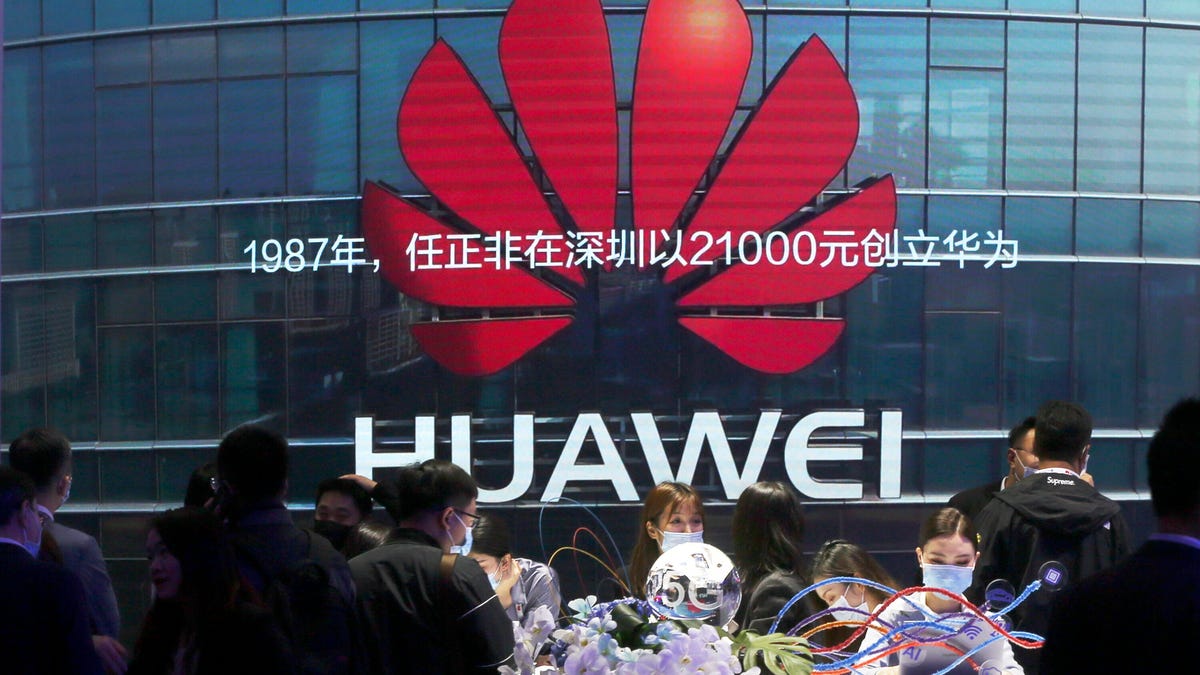Huawei's 2023 Revenue Soars Despite US Sanctions
Once on the brink because of trade restrictions, the Chinese phone maker says its revenue for this year is closing in on $100 billion.

Huawei says it is "back on track" after its revenue neared $100 billion for the year despite continuing US sanctions on the Chinese phone maker.
Sales surged to more than 700 billion yuan ($98.7 billion) in 2023, the company said Friday, representing 9% growth from the $642 billion yuan ($92.4 billion) reported in 2022. That's thanks to what Huawei says is its "solid" information and communication technology infrastructure business as well as better-than-expected performance from its devices business, which includes smartphones.
Huawei's latest earnings come as the company continues to grapple with years-long US sanctions that are aimed at restricting its access to American technology, particularly cutting-edge chips. This August, Huawei released its first 5G smartphone, representing a chipmaking breakthrough for Beijing, which has previously relied on US components for such devices.
"After years of hard work, we've managed to weather the storm. And now we're pretty much back on track," said Ken Hu, one of Huawei's rotating chairmen, in an end-of-year message to staff. "We have to be aware that changes in the business environment are not caused by geopolitical conflict alone, but also by fluctuating global economic cycles."
After releasing a series of 4G smartphones on the back of US sanctions, Huawei debuted its Mate 60 handset -- complete with 5G -- in August 2023.
Huawei's smartphone performance
Huawei said on Friday that its devices business surpassed expectations for 2023. It plans to "double down" on the business for 2024.
In August, Huawei announced the Mate 60 Pro smartphone, powered by a made-in-China chip that US sanctions were designed to prevent. The handset shocked industry experts who were perplexed by how Huawei could produce an advanced smartphone complete with 5G support without key American components. The phone indicated that Huawei and Chinese technology had reached a new degree of self-sufficiency.
The Mate 60 Pro helped Huawei reach No. 1 among Chinese mobile brands and reclaim market share from the likes of Apple, too. According to Counterpoint Research, Huawei snatched back market share in 2023, growing from 10% in the first quarter to 14% in the third quarter. Apple's market share in China dropped from 20% to 15% during the same period.
"Hard work has enabled us to survive and grow, but we still have serious challenges ahead of us," Hu went on to say in his year-end message. "Geopolitical and economic uncertainties abound, while technology restrictions and trade barriers continue to have an impact on the world."
In December, US Commerce Secretary Gina Raimondo said Washington will take the "strongest possible" actions to protect national security in response to China's chipmaking breakthrough.
Huawei was once among the top smartphone companies in the world, rivaling Apple and Samsung. However, phone sales fell dramatically after the Trump administration imposed a series of sanctions on the Chinese telecom giant beginning in 2019. In 2020, Washington cut off Huawei's global chip supply in a broadened round of sanctions that effectively banned global companies that use American technology or equipment from doing business with Huawei.
As a result, Huawei had been relegated to producing mostly 4G phones or relying on a limited supply of stockpiled 5G chips. Prior to the Mate 60, the last 5G chipset Huawei developed in house was the Kirin 9000 5G, which powered 2020's Mate 40 Pro.

